I Felt Like We Needed More Of These










I felt like we needed more of these
Part 1 | Part 2 | Part 3 | Part 4 | Part 5 | Part 6
More Posts from Blazingquill and Others



Title cards for a 3-part Gondolin podcast special
Super-quick guide to reading the Vorkosigan Saga in order
We’re gonna call this the first of many, many “why you should be reading the Vorkosigan saga” posts I’ll be making. For any new initiates, the Vorkosigan Saga is a series of sci-fi novels by Lois McMaster Bujold. While they can be broadly classified as “space opera”, they also take pretty significant detours into the political thriller, romantic comedy, horror, speculative fiction, mystery, and military drama genres. It’s very much hard sci-fi, with remarkably deep thought given to world-building and technology (like BSG, this is a universe where humanity is the only race, and so all the monsters are of our own making), but it doesn’t use its rich setting as an excuse to skimp on the incredibly deep characterization or ruthlessly clever plotting. Oh man, let me tell you, the characterization in these stories is absolutely fearless. Some of what Bujold puts her main characters through is the equivalent of taking away all of Tony Stark’s money and technology and resources halfway through Iron Man and, instead of having him angst until things get back to normal, taking that opportunity to use the logical shifts in characterization as a means to explore a new type of superhero story. Gah.
Also remarkably for sci-fi, the main characters are rarely your typical square-jawed heroes–I mean, the leading man for the majority of this action-adventure series (despite what some of the truly awful cover art would have you believe) is all of four-foot-nine with brittle bones.
Okay. I’ll gush more later, but for now: where to get started? After all, there are 15 novels and 4 novellas, and chances are most bookstores will have various compilation volumes that collect stories together based more on theme or publication date than on chronological order. While you can make your way through in any order you please–Bujold took pains to ensure that a new reader could jump in anywhere–the careful progression of characterization lends itself best to a chronological approach. Oh, and I should mention that this isn’t one of those series where the quality declines sharply over time–the latest books are some of my favourites in the entire series.
Here’s a recommended reading order, based on the internal chronology:
1. Shards of Honor (also published in the omnibus “Cordelia’s Honor”)
2. Barrayar (also published in the omnibus “Cordelia’s Honor”)
These first two books are essentially one self-contained story. The writing’s a little shakier than a lot of what follows, IMO, but the second half of Barrayar is some of my favourite stuff in the entire series, and Cordelia is absolutely marvellous.
3. The Warrior’s Apprentice (also published in the omnibus “Young Miles”)
There’s a fairly significant time gap between this book and the first two, and a different protagonist, so you can think of this one as a second jumping-off point for the series–I started with this one and eventually worked my way back to the first two without any trouble following. It all boils down to whether you want to know more about the past than the main character does–either way, it’s a fantastic read and remains one of my favourite books in the series.
4. “Mountains of Mourning” novella (also published in the omnibus “Young Miles”)
5. The Vor Game (also published in the omnibus “Young Miles”)
6. Cetaganda (also published in the omnibus “Miles, Mystery, and Mayhem”)
7. “Labyrinth” novella (also published in the omnibus “Miles, Mystery, and Mayhem”, as well as “Miles, Mutants, and Microbes”, for some reason)
8. “Borders of Infinity” novella (also published in the omnibus “Miles Errant”)
I frickin’ love this story okay.
9. Brothers in Arms (also published in the omnibus “Miles Errant”)
10. Mirror Dance (also published in the omnibus “Miles Errant”)
11. Memory (I think this one was only ever published as a standalone)
One of my all-time favourite novels, period.
12. Komarr (also published in the omnibus “Miles in Love”)
13. A Civil Campaign (also published in the omnibus “Miles in Love”)
If the incredibly dark books mid-series start getting you down, let me assure you that this one is frequently laugh-until-you-cry funny.
14. “Winterfair Gifts” novella (also published in the omnibus “Miles in Love”)
15. Diplomatic Immunity (also published in the omnibus “Miles, Mutants, and Microbes”)
16. Captain Vorpatril’s Alliance
Latest book to be published, haven’t read it yet, heard good things!
17. Cryoburn
There are also two novels which influence the main plotline a little more obliquely and are more background reading than anything else, and that's Falling Free (takes place long before the main series, should probably be read before Diplomatic Immunity) and Ethan of Athos (essentially a side-plot taking place approximately between Cetaganda and “Labyrinth”).
Phew. Okay. There you go. Have fun! If you want to try before you buy, even the smallish libraries I’ve been to will generally have the omnibus editions on the shelves. If you really can’t find these books anywhere, drop me an ask and I’ll see if I can help out.

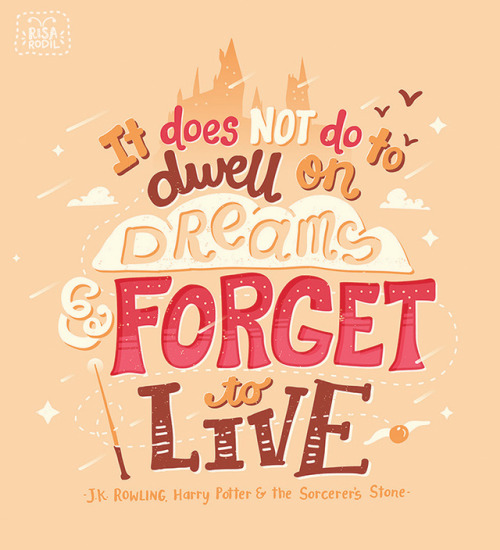


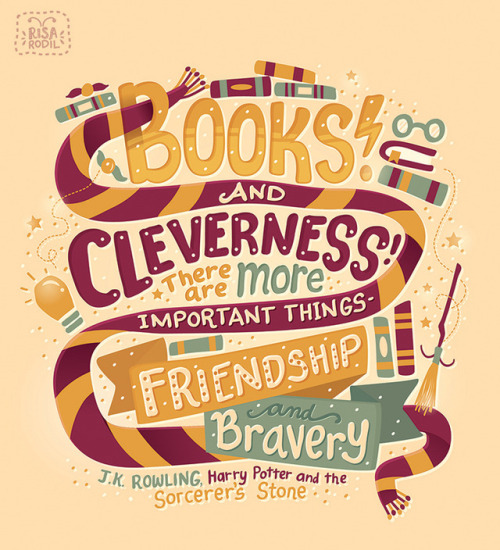



Happy Anniversary, Harry Potter! Thank you for 20 years of magic ⚡️
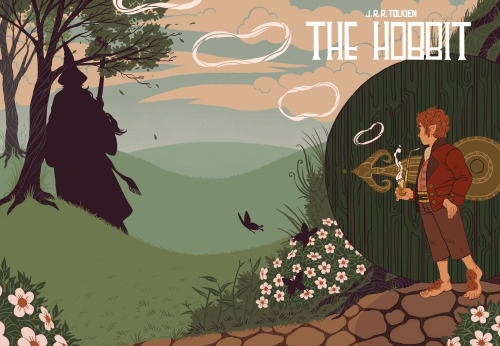
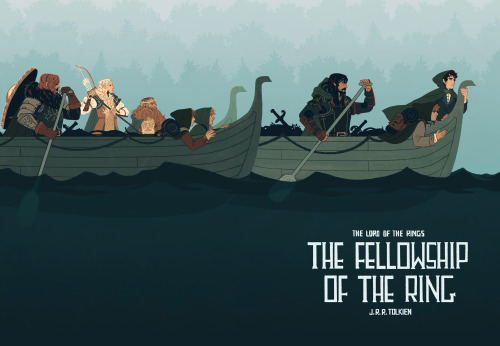
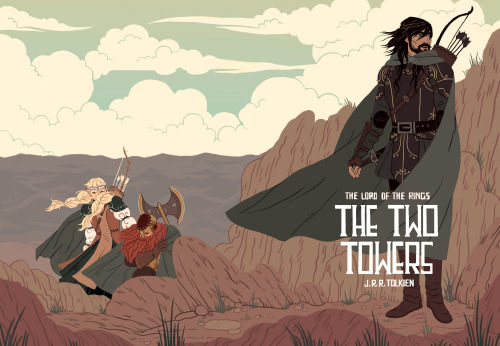
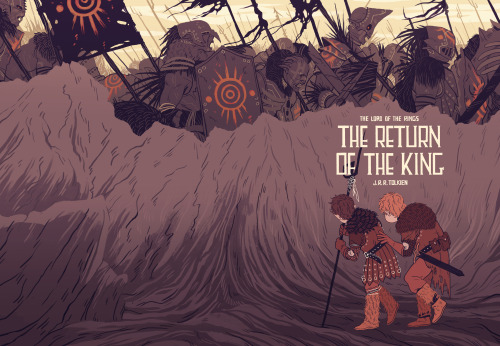
Finally finished the set! This took a crazy long time to complete, but I’m happy with the result
![ASOIAF Meme | [2/3] OTP ► Jaime And Brienne](https://64.media.tumblr.com/797d70a8545ed6e3687acd79b59333d7/tumblr_owowv5F5961snykouo6_400.gif)
![ASOIAF Meme | [2/3] OTP ► Jaime And Brienne](https://64.media.tumblr.com/6a30835ee977d759ab4e96edec23fad9/tumblr_owowv5F5961snykouo4_400.gif)
![ASOIAF Meme | [2/3] OTP ► Jaime And Brienne](https://64.media.tumblr.com/89836d841eaaff7e5c61d673c8e4c496/tumblr_owowv5F5961snykouo1_400.gif)
![ASOIAF Meme | [2/3] OTP ► Jaime And Brienne](https://64.media.tumblr.com/f6eddf8fcdd46d99a06cf910fa5de96f/tumblr_owowv5F5961snykouo5_400.gif)
![ASOIAF Meme | [2/3] OTP ► Jaime And Brienne](https://64.media.tumblr.com/a3ae72067f13cc837321c491d5c8caee/tumblr_owowv5F5961snykouo9_400.gif)
![ASOIAF Meme | [2/3] OTP ► Jaime And Brienne](https://64.media.tumblr.com/2414780b1a6dd557dc6c5612abb9873d/tumblr_owowv5F5961snykouo7_400.gif)
![ASOIAF Meme | [2/3] OTP ► Jaime And Brienne](https://64.media.tumblr.com/db62b37545a4e319a858d2156b4c989e/tumblr_owowv5F5961snykouo10_400.gif)
![ASOIAF Meme | [2/3] OTP ► Jaime And Brienne](https://64.media.tumblr.com/7f50693e049f5132b4874c2b1adc341b/tumblr_owowv5F5961snykouo8_400.gif)
![ASOIAF Meme | [2/3] OTP ► Jaime And Brienne](https://64.media.tumblr.com/1a8f05331685d9916c789d8d98ca2fd6/tumblr_owowv5F5961snykouo3_400.gif)
![ASOIAF Meme | [2/3] OTP ► Jaime And Brienne](https://64.media.tumblr.com/34f9b7c9166192904aae88836ddf851d/tumblr_owowv5F5961snykouo2_400.gif)
ASOIAF meme | [2/3] OTP ► Jaime and Brienne
↳ “ Brienne’s big blue eyes were full of hurt as Balon Swann and a dozen gold cloaks led her away. You ought to be blowing me kisses, wench, he wanted to tell her. Why must they misunderstand every bloody thing he did? Aerys. It all grows from Aerys. Jaime turned his back on the wench and strode across the yard. ”
Yes pls


It’s still possible that Delphi actually isn’t Voldemort’s daughter, but only believes that she is.
Why? Because of what J.K. Rowling herself recently posted on Pottermore, with the entry for Ilvermony School of Witchcraft and Wizardry.
J.K. Rowling wrote that the Gaunt family had at least one other branch, namely, in Ireland. Rionach Gaunt, a Pureblood witch and descendant of Salazar Slytherin, married the Pureblood wizard William Sayre in the late 1500’s/early 1600’s.
This is what Rowling writes in the article:
Isolt Sayre was born around 1603 and spent her earliest childhood in the valley of Coomloughra, County Kerry, in Ireland. She was the offspring of two pure-blood wizarding families (OP: Gaunt and Sayre).
Her father, William Sayre, was a direct descendant of the famous Irish witch Morrigan, an Animagus whose creature form was a crow. William nicknamed his daughter ‘Morrigan’ for her affinity for all natural things when she was young. Her early childhood was idyllic, with parents who loved her and were quietly helpful to their Muggle neighbours, producing magical cures for humans and livestock alike.
However, at five years old, an attack upon the family home resulted in the death of both of her parents. Isolt was ‘rescued’ from the fire by her mother’s estranged sister, Gormlaith Gaunt, who took her to the neighbouring valley of Coomcallee, or ‘Hag’s Glen,’ and raised her there.
Isolt Sayre later founded Ilvermorny School of Witchcraft and Wizardry. However, being a descendant of Slytherin, it’s heavily implied she could speak (or, at least understand) Parseltongue. Her “house” at Ilvermorny, Horned Serpent, was named after a [likely basilisk relative] she “could speak with and understand”.
According to J.K. Rowling:
Most fascinating of all to Isolt, was the great horned river serpent with a jewel set into its forehead, which lived in a nearby creek. Even her Pukwudgie guide was terrified of this beast, but to his astonishment, the Horned Serpent seemed to like Isolt. Even more alarming to William was the fact that she claimed to understand what the Horned Serpent was saying to her.
Isolt learned not to talk to William about her strange sense of kinship with the serpent, nor of the fact that it seemed to tell her things. She took to visiting the creek alone and never told the Pukwudgie where she had been. The serpent’s message never varied:
'Until I am part of your family, your family is doomed.’
Isolt had no family, unless you counted Gormlaith back in Ireland. She could not understand the Horned Serpent’s cryptic words, or even decide whether she was imagining the voice in which he seemed to speak to her.
Isolt had two daughters with her Muggle husband, James Steward: Martha, a Squib, and Rionach II, a witch.
Rionach II never married “in an effort to eradicate Slytherin’s bloodline”. However, her sister, Martha, did marry a Native American man from a local tribe.
According, again, to J.K. Rowling:
Rionach, the youngest of James and Isolt’s daughters, taught Defence Against the Dark Arts at Ilvermorny for many years. Rionach never married. There was a rumour, never confirmed by her family, that, unlike her sister Martha, Rionach was born with the ability to speak Parseltongue, and that she was determined not to pass on Slytherin ancestry into the next generation (the American branch of the family was unaware that Gormlaith was not the last of the Gaunts, and that the line continued in England).
[…] Martha, the elder of James and Isolt’s twins, was a Squib. Deeply loved though Martha was by her parents and adoptive brothers, it was painful for her to grow up at Ilvermorny when she was unable to perform magic.
She eventually married the non-magical brother of a friend from the Pocomtuc tribe, and lived henceforth as a No-Maj (Muggle).
In another interview, Rowling pointedly confirmed that Muggle-borns “are a result of Squibs intermarrying with Muggles, and magic showing up in the descendants of these unions several generations later”.
“Muggle-borns will have a witch or wizard somewhere on their family tree, in some cases many, many generations back. The gene resurfaces in some unexpected places.” - J.K. Rowling
Due to this, it’s entirely possible that Delphi is actually the long-lost descendant of Martha Steward, and thus, the other branch of the Gaunt family. She merely assumes she’s Lord Voldemort’s daughter, because she can speak Parseltongue.
If this is the case, Delphi would also likely be Muggle-born, or, at best, Half-blood.

If that’s the case, then why would Lord Voldemort and/or his followers have taken / stolen Delphi as a child?
This answer, too, can be found easily within the Ilvermony article. Voldemort’s distant relative, Gormlaith Gaunt, also stole away Isolt Sayre as a child for the following reasons, and later, also sought to steal Isolt’s daughters:
As Isolt grew older she came to realise that her saviour was in reality her kidnapper and the murderer of her parents. Unstable and cruel, Gormlaith was a fanatical pure-blood who believed that her sister’s helpfulness to her Muggle neighbours, was setting Isolt upon a dangerous path to intermarriage with a non-magical man. Only by stealing the child, Gormlaith believed, could their daughter be brought back to the 'right way’: raised in the belief that as a descendant of both Morrigan and Salazar Slytherin she ought to associate only with pure-bloods.
[…] Gormlaith refused to allow Isolt to take up her place at Hogwarts when the letter arrived, on the basis that Isolt would learn more at home than at a dangerously egalitarian establishment full of Mudbloods. However, Gormlaith herself had attended Hogwarts, and told Isolt a great deal about the school. In the main, she did this to denigrate the place, lamenting that Salazar Slytherin’s plans for the purity of wizardkind had not been fulfilled.
[…] She intended to lay waste to the second Ilvermorny, slaughter the parents who had thwarted her ambition of a great pure-blood family, steal her great nieces who were the last to carry the sacred bloodline, and return with them to Hag’s Glen.
Likewise, in the article on Pottermore about Draco Malfoy, Rowling wrote the following:
Draco was raised in an atmosphere of regret that the Dark Lord had not succeeded in taking command of the wizarding community, although he was prudently reminded that such sentiments ought not to be expressed outside the small circle of the family and their close friends, 'or Daddy might get into trouble’.
In childhood, Draco associated mainly with the pure-blood children of his father’s ex-Death Eater cronies, and therefore arrived at Hogwarts with a small gang of friends already made, including Theodore Nott and Vincent Crabbe.
Like every other child of Harry Potter’s age, Draco heard stories of the Boy Who Lived through his youth. Many different theories had been in circulation for years as to how Harry survived what should have been a lethal attack, and one of the most persistentwas that Harry [Potter] himself was a great Dark wizard.
The fact that he had been removed from the wizarding community seemed (to wishful thinkers) to support this view, and Draco’s father, wily Lucius Malfoy, was one of those who subscribed most eagerly to the theory.
It was comforting to think that he, Lucius, might be in for a second chance of world domination, should this Potter boy prove to be another, and greater, pure-blood champion.
It was, therefore, in the knowledge that he was doing nothing of which his father would disapprove, and in the hope that he might be able to relay some interesting news home, that Draco Malfoy offered Harry Potter his hand when he realised who he was on the Hogwarts Express.
Harry’s refusal of Draco’s friendly overtures, and the fact that he had already formed allegiance to Ron Weasley, whose family is anathema to the Malfoys, turns Malfoy against him at once. Draco realised, correctly, that the wild hopes of the ex-Death Eaters – that Harry Potter was another, and better, Voldemort – are completely unfounded, and their mutual enmity is assured from that point.

How and why would Lord Voldemort be in America in the first place?
I think this is also for a reason explained by Rowling in the Ilvermorny article: Voldemort was looking for the wand of Salazar Slytherin, which was buried on the grounds of Ilvermorny. (Or heard of a “powerful wand” being at Ilvermorny, and assumed it could be the Elder Wand.)
From J.K. Rowling:
Next, [Gormlaith] uttered a single sibilant word in Parseltongue, the language of snakes. The wand that had served Isolt so faithfully for many years quivered once on the bedstand beside her as she slept, and became inactive.
In all the years that she had lived with it, Isolt had never known that she held in her hand the wand of Salazar Slytherin, one of the founders of Hogwarts, and that it contained a fragment of a magical snake’s horn: in this case, a Basilisk. The wand had been taught by its creator to 'sleep’ when so instructed, and this secret had been handed down through the centuries to each member of Slytherin’s family who possessed it.
[…] Isolt screamed at James to go to the girls: she ran to assist her adoptive sons, Slytherin’s wand in her hand.
Only when she raised it to attack her hated aunt did she realise that for all the good it would do her, the sleeping wand might as well have been a stick she had found on the ground.
[…] Slytherin’s wand remained inactive following Gormlaith’s command in Parseltongue. Isolt could not speak the language, but, in any case, she no longer wanted to touch the wand that was the last relic of her unhappy childhood. She and James buried it outside the grounds.
Within a year, an unknown species of snakewood tree had grown out of the earth on the spot where the wand was buried. It resisted all attempts to prune or kill it, but after several years the leaves were found to contain powerful medicinal properties.
This tree seemed testament to the fact that Slytherin’s wand, like his scattered descendants, encompassed both noble and ignoble. The very best of him seemed to have migrated to America.
But who could speak Parseltongue, aside from Harry, in the series? Lord Voldemort. A man who, even as Tom Riddle, as seen in Chamber of Secrets, had an unhealthy obsession with Salazar Slytherin.
“You see?” he whispered. “It was a name I was already using at Hogwarts, to my most intimate friends only, of course. You think I was going to use my filthy Muggle Father’s name forever? I, in whose veins runs the blood of Salazar Slytherin’s himself, through my mother’s side? I, keep the name of the foul, common muggle, who abandoned me even before I was born, just because he found out his wife was a witch? No, Harry — I fashioned myself a new name, a name I knew wizards everywhere would one day fear to speak, when I had become the greatest sorcerer in the world!”
[…] “Well, he certainly kept an annoyingly close watch on me after Hagrid was expelled,” said Riddle carelessly. “I knew it wouldn’t be safe to open the Chamber again while I was still at school. But I wasn’t going to waste those long years I’d spent searching for it. I decided to leave behind a diary, preserving my sixteen-year-old self in its pages, so that one day, with luck, I would be able to lead another in my footsteps, and finish Salazar Slytherin’s noble work.” - Tom Riddle, Chamber of Secrets
Likewise, we all know that Lord Voldemort greatly coveted Founders’ items - and Slytherin’s wand would have the perfect object to turn into another one of his Horcruxes.
Had Voldemort not sought the Elder Wand, likely, he would have also done anything in his power to lay his claim to Salazar Slytherin’s wand. This is especially true, given that he robs Dumbledore’s grave just in order to obtain the Elder Wand.
Likewise, by finding out how (and why) Salazar Slytherin’s wand ended up in America in the first place, Voldemort would also learn…that he was not the last of Slytherin’s decendants. That Slytherin’s descendants may still exist, alive and well, in America, through descent from Martha Steward.
Likewise, during the books, Voldemort travelled far and wide, according to Harry. We know that he travelled to Germany (Nurmengard) to interogate Gellert Grindelwald. Voldemort also travelling to America wouldn’t be much of a stretch.

If she isn’t Voldemort’s daughter, then why does Delphi have blue-silvery hair and other magical powers?
I believe that this may be due to several reasons: namely, as a descendant of William Sayre, Delphi would also be descended from the Irish witch Morrigan. Morrigan was stated to be a powerful witch and an Animagus, one who took on the form of a crow.
In Irish lore, Morrigan was known as “the Morrígan”, which means “the phantom queen”, or “Mórrígan”, “the great queen”.
However, “Morrigan” also refers to a type of creature in the earliest source material - “a monster in female form, that is, a morrígan”. (“morrígna” is the plural term used)
Likewise, in traditional Irish lore, Morrigan could turn into other animals besides a crow.
In response she intervenes in his next combat, first in the form of an eel who trips him, then as a wolf who stampedes cattle across the ford, and finally as a white, red-eared heifer leading the stampede… (Wikipedia)
This would indicate that Morrigan, though believed to be a witch, may actually be something more along the lines of a Veela.
“Veela are semi-human magical beings; beautiful women with white-gold hair and skin that appears to shine moon-bright. When angry, Veela take on a less pleasant appearance; their faces elongate into sharp, cruel-beaked bird heads, and long scaly wings burst from their shoulders.” (HP Wiki)
Likewise, we know that Veela, as seen with the Delacour family, can intermarry and have children with humans (namely, wizards).
Veela have been known to marry wizards, although it is unknown whether any have married Muggles. Children of these unions are half-Veela, and they will inherit magical ability from their fathers and beauty and charm from their mothers. Veela traits seem to persist for at least a few generations. These traits only show up in females, the daughters of their offspring. Apolline Delacour is a half-Veela, thus her children Fleur and Gabrielle are quarter-Veela, and Fleur’s children Victoire, Dominique, and Louis are eighth-Veela; it is unknown if they have inherited any specific Veela characteristics from their grandmother. It is unknown whether half-blooded Veela can throw fire or transform into harpy-like creatures, as their full-blooded relatives can. (HP Wiki)
However, Delphi’s appearance may also point to Veela ancestry much sooner in her family tree. If this is the case, and Delphi is part-Veela, then that would also explain Albus Potter’s “crush” on her.
[Veela] magic creates an “entranced” effect, as noted in the books and hinted in the movie, wherein men (presumed to be heterosexual) fall into a trance-like stance, similar to the Imperio charm, in which they lose sight of their surroundings and focus solely on the Veela’s dance or appearance. Men are also prone to experiencing thoughts of strong desire to impress or be with the veela in question, and are strongly attracted romantically. (HP Wiki)

But a crow isn’t the same as an augurey, and Delphi is “the augurey”, not “the crow”!
True. However, the augurey physically resembles, and shares symbolic traits, with crows, such as black feathering with a green-or-blue hue, or being an “omen of death”. Likewise, you know what else the augurey is called in Harry Potter mythology? “The Irish phoenix”.
Morrigan is, her her core, an Irish figure. Likewise, Isolt Sayre came from the Irish branch of the Gaunt family, which was thought to have died out [Pureblood-wise] with Gormlaith Gaunt’s death. From what we know, Lord Voldemort came from the English branch.
From the HP Wiki:
The Augurey, also known as the Irish Phoenix, is a thin and mournful looking bird, somewhat like a small underfed vulture in appearance, with greenish black feathers and a sharp beak. Its diet consists of insects, fairies and flies, which it hunts for in the heavy rain. Intensely shy, the Augurey lives in a tear-shaped nest in thorn and brambles.
It is native to Great Britain and Ireland, but is also found in Northern Europe. It was long believed that the mournful cry of the Augurey foretold death, and wizards would go to great lengths to avoid Augurey nests. However, research determined that the Augurey merely sings when it is about to rain.
The term “augury” most commonly refers to a method of divination by studying the flight patterns of birds.
However, Morrigan also had a large connection with divination and death. In lore, she is also said to be a Seer and diviner, warning heroes of their impending demise:
Her role was to not only be a symbol of imminent death, but to also influence the outcome of war.
Most often she did this by appearing as a crow flying overhead, and would either inspire fear or courage in the hearts of the warriors. In some cases, she is written to have appeared in visions to those who are destined to die in battle by washing their bloody armor. In this specific role, she is also given the role of foretelling imminent death, with a particular emphasis on the individual. (Wikipedia)
Likewise, Delphi’s very name all but means 'prophecy’. Delphi [in Greece] is perhaps best known for the oracle of the Pythia, who would give prophecies in a trance, which equates with Seers in the Harry Potter world.
A Seer from history, mythology, and lore - just like Morrigan.

If that’s the case, what happened to Delphi’s true parents?
Likley killed by Voldemort and/or Voldemort’s followers, especially since Martha Steward’s decendants would largely be of Muggle ancestry, maybe with a Half-bloods and Muggle-borns mixed in.
In Voldemort’s eyes, they would have “defiled” Slytherin’s bloodline.
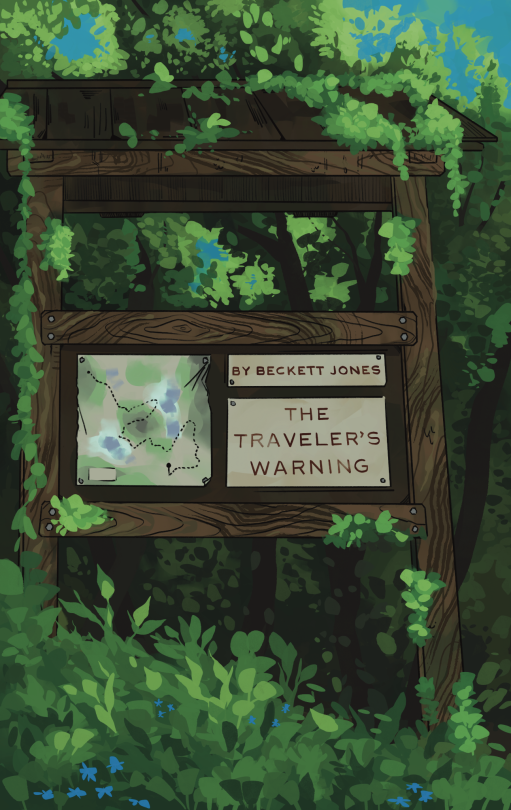



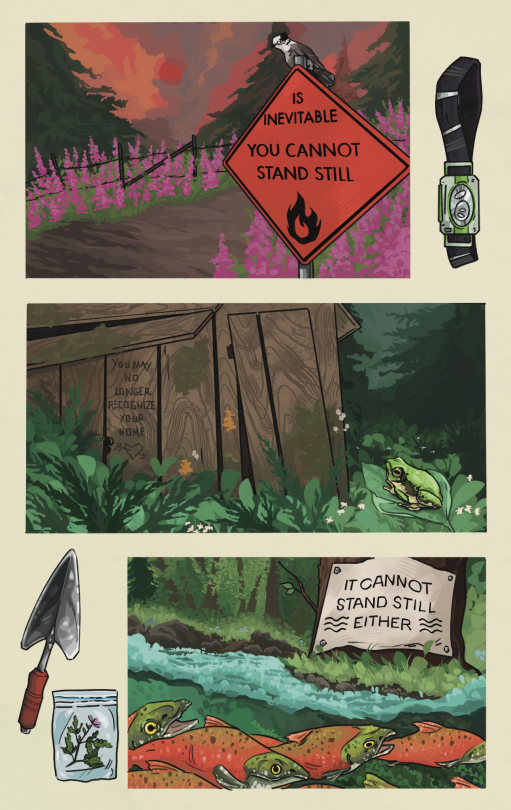



A short comic I made about my experiences as a seasonal worker, and the way places change you.



late posts of some of my Wicked act2 scenes.





Harry hesitated, but after all, Ron had been honest with him, so he told Ron the truth…
one of my absolute favorite bits from the hp books that never made it into the movies. though admittedly, the ootp movie had to rly condense a lot. i think the relationship between harry and ron is super underrated/overlooked - there’s so much love, trust, and support between them in this scene.
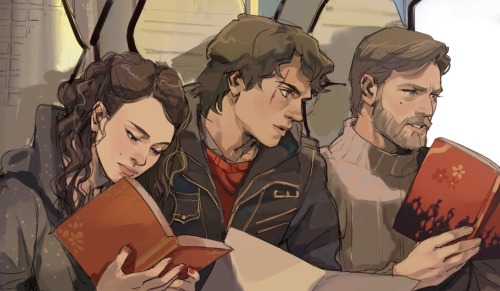
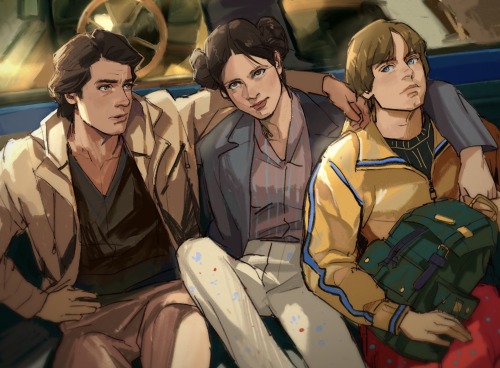
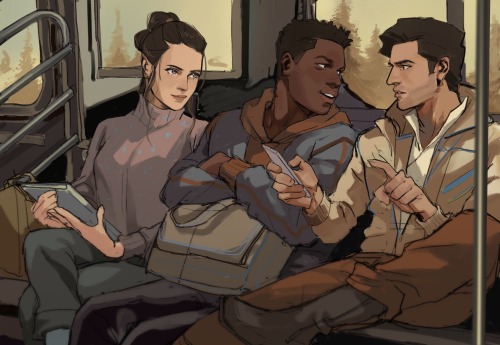
Modern Star Wars by @thisuserisangry
-
 nihilminus liked this · 2 years ago
nihilminus liked this · 2 years ago -
 despisethedeck liked this · 3 years ago
despisethedeck liked this · 3 years ago -
 little-lordx-blog liked this · 3 years ago
little-lordx-blog liked this · 3 years ago -
 mlfgt liked this · 5 years ago
mlfgt liked this · 5 years ago -
 hellmothereva liked this · 6 years ago
hellmothereva liked this · 6 years ago -
 reignofgames liked this · 6 years ago
reignofgames liked this · 6 years ago -
 vetor2064 reblogged this · 6 years ago
vetor2064 reblogged this · 6 years ago -
 vetor2064 liked this · 6 years ago
vetor2064 liked this · 6 years ago -
 dreamysprout liked this · 7 years ago
dreamysprout liked this · 7 years ago -
 daudisincrediblytired liked this · 7 years ago
daudisincrediblytired liked this · 7 years ago -
 unnameddoc liked this · 7 years ago
unnameddoc liked this · 7 years ago -
 monokurobaku liked this · 7 years ago
monokurobaku liked this · 7 years ago -
 luralise reblogged this · 7 years ago
luralise reblogged this · 7 years ago -
 t-m-f liked this · 7 years ago
t-m-f liked this · 7 years ago -
 alwaysadreamer369 liked this · 7 years ago
alwaysadreamer369 liked this · 7 years ago -
 seguroldu-blog liked this · 7 years ago
seguroldu-blog liked this · 7 years ago -
 the-captain-of-canada liked this · 7 years ago
the-captain-of-canada liked this · 7 years ago -
 bring-the-homo liked this · 7 years ago
bring-the-homo liked this · 7 years ago -
 enakane liked this · 8 years ago
enakane liked this · 8 years ago -
 mynameiscommandershepard reblogged this · 8 years ago
mynameiscommandershepard reblogged this · 8 years ago -
 rawrimasillybear liked this · 8 years ago
rawrimasillybear liked this · 8 years ago -
 ignuscloud liked this · 8 years ago
ignuscloud liked this · 8 years ago -
 actual-cannabis-shia-labeouf liked this · 8 years ago
actual-cannabis-shia-labeouf liked this · 8 years ago -
 icecreamdilemma reblogged this · 8 years ago
icecreamdilemma reblogged this · 8 years ago -
 xenicaking liked this · 8 years ago
xenicaking liked this · 8 years ago -
 yourgayercousin reblogged this · 8 years ago
yourgayercousin reblogged this · 8 years ago -
 the-queen-and-her-soldier reblogged this · 8 years ago
the-queen-and-her-soldier reblogged this · 8 years ago -
 cbfwn liked this · 8 years ago
cbfwn liked this · 8 years ago -
 team-free-ass reblogged this · 8 years ago
team-free-ass reblogged this · 8 years ago -
 team-free-ass liked this · 8 years ago
team-free-ass liked this · 8 years ago -
 runawaybat liked this · 8 years ago
runawaybat liked this · 8 years ago
